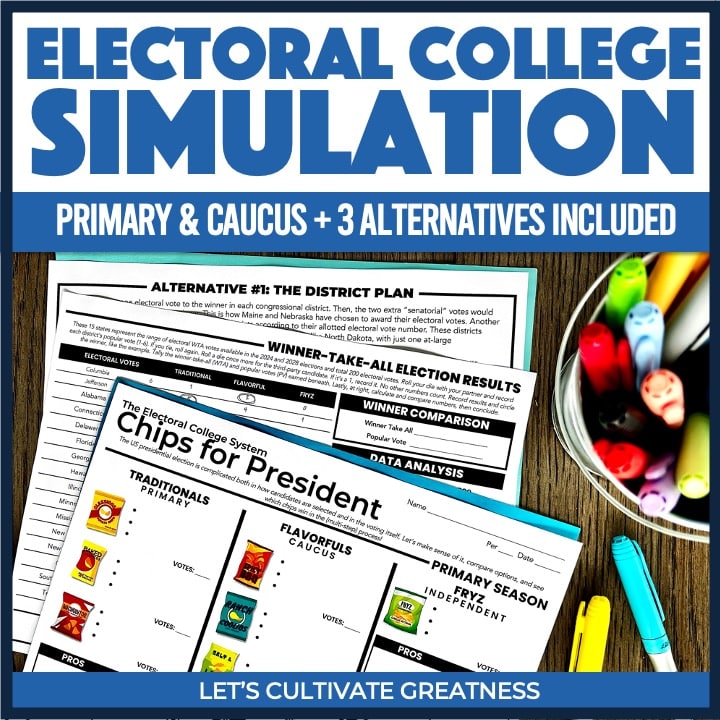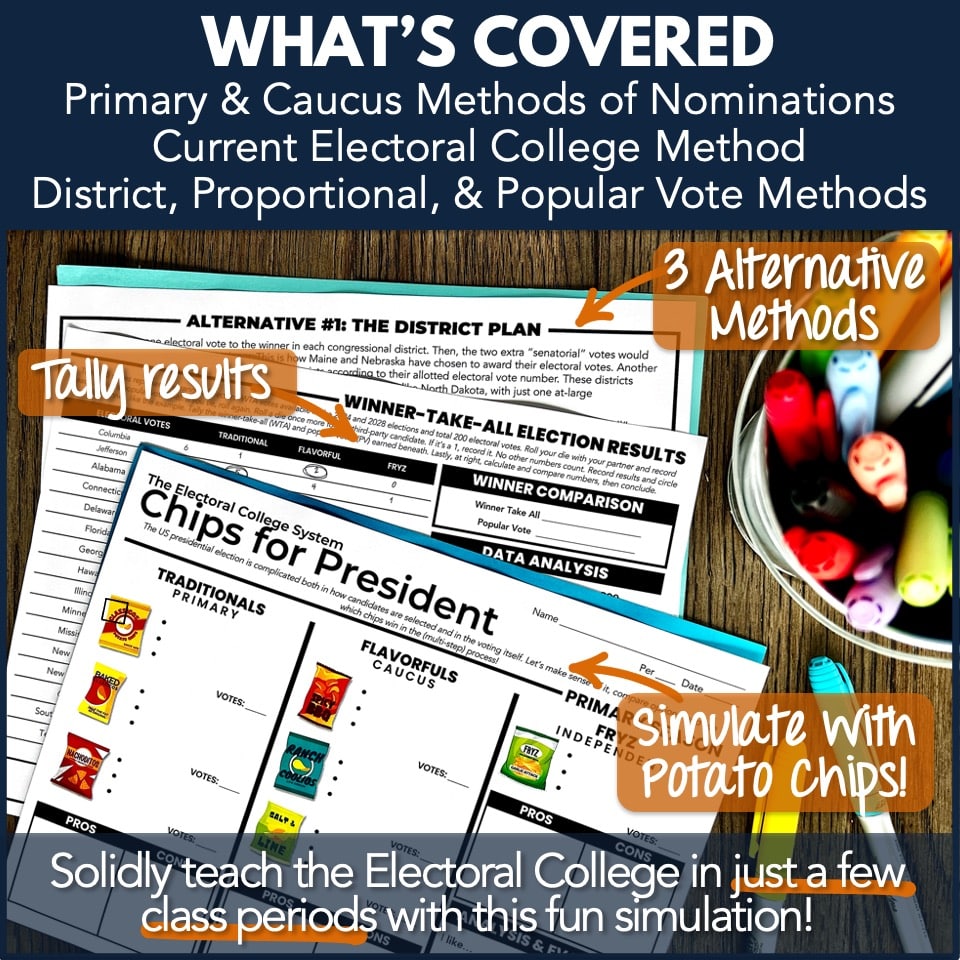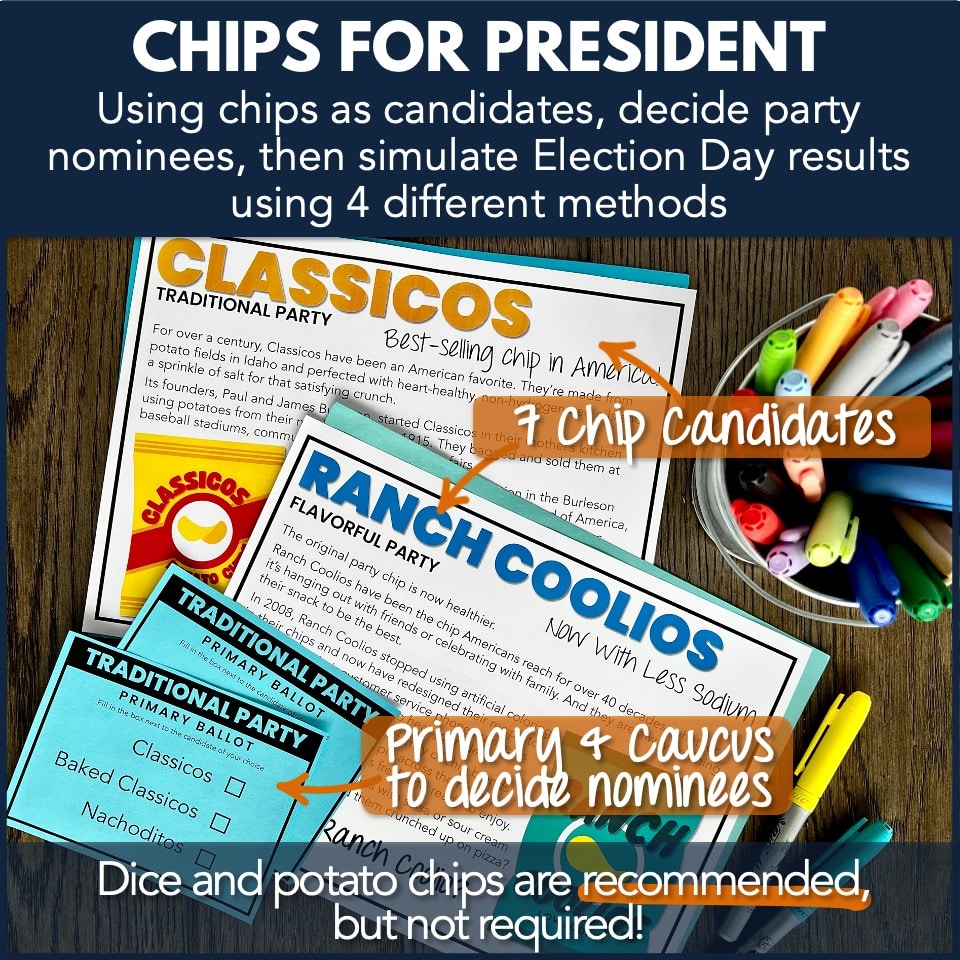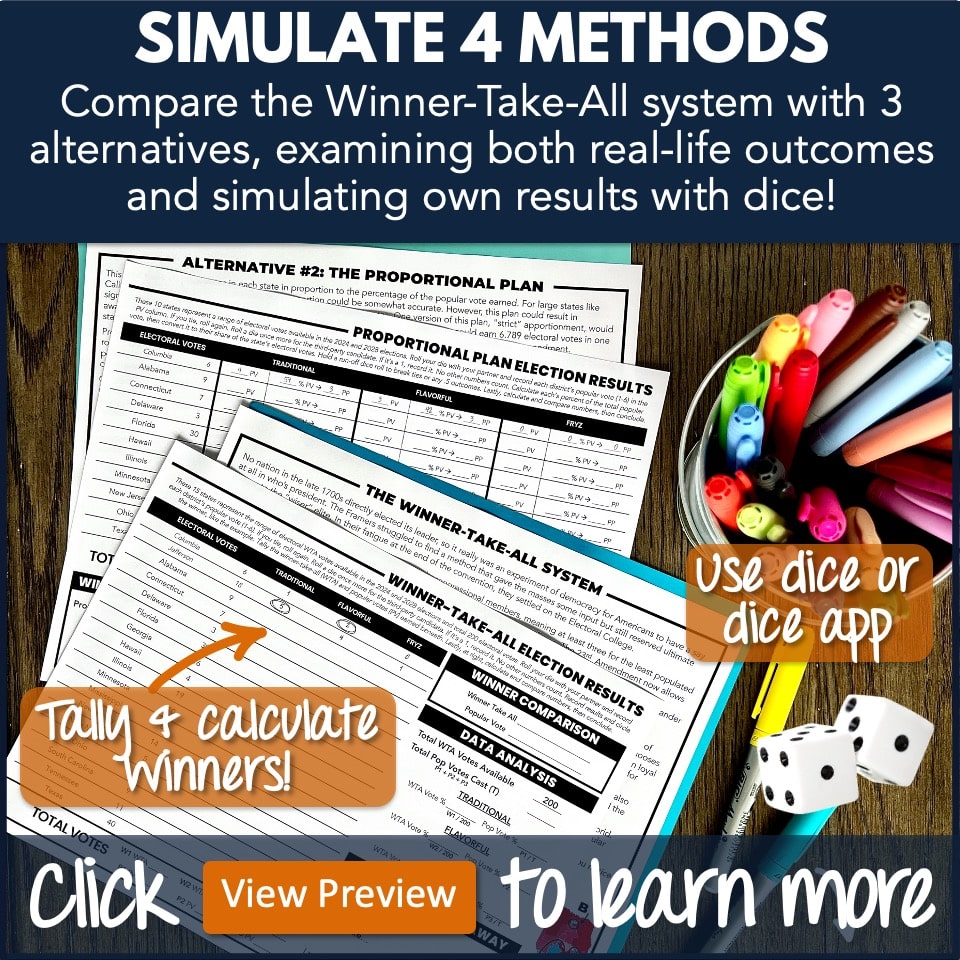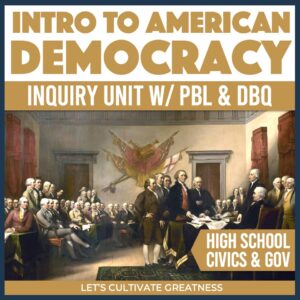Electoral College Simulation Activity Kit
$5.00
Confidently teach the Electoral College with this comprehensive and fun activity kit.
It explores 4 different ways to count electoral votes, as well as the primary and caucus methods for nominating presidential candidates.
Description
Dice and potato chips are recommended but not required in the fun simulation!
This multi-activity lesson sequence shows students how the President really gets elected…. and how no one method is the “best.”
This 3-in-1 simulation kit has students mimic
- Conducting a primary and caucus to nominate candidates
- The impact the two-party system has on presidential elections
- The role of third-party candidates in presidential elections
- The current Winner-Take-All method for tallying Electoral College votes
- 3 Alternatives Methods:
– District Plan
– Proportional Plan
– National Popular Vote Plan
Using different flavors of potato chips as candidates, students whittle down their votes to the “best” chips in each category (their “political party”). Then, they pit them against each other on Election Day.
Students then explore the currently used Winner-Take-All method and three alternatives, their pros and cons, and how they would have played out in real life using election data.
Conclude with an extended reflection on all the methods and, of course, have some chips!
These activities can be done well in 2-3 class periods.
Included in this Electoral College simulation activity kit:
- Teacher Overview with detailed lesson plans for each activity, including various implementation options and step-by-step calculation directions
- Sample Tallies of each method with calculations shown
- 7 Chip Candidate bio sheet and primary mock ballots
- Primary & Caucus sheet to compare candidates, select nominee, and compare pros and cons of both systems
- 4 1-Page Reading passages that summarize, list pros and cons, and show real-life election data for each of the tabulation methods
- Simulation Tally sheets that guide students through Election Day ballot counting using dice and a calculator, then compare with the other options
- Reflection & Synthesis sheet to conclude on all the methods and arrive at a final position of which method is the best
This resource is 29 PDF pages, plus Google files.
What grades is this intended for?
This was designed for high school.
What supports are included? How can I modify this?
Short readings explaining each counting method include real-life examples, and tallying sheets include step-by-step directions and filled-out examples.
Google versions of student materials are editable to tailor for your students’ needs.
Can I use this in a homeschooling setting?
Sure! Everything in this kit can still be used in a solo or a small-group setting.
Is this editable? What file types does this resource come in?
The main resource is a secured, non-editable PDF file intended to be printed.
Included are links to editable Google files, to customize to your classroom needs and assign digitally if you choose.
What standards does this address?
Several! Standards vary, but this resource supports these from various states:
- Identify different primary formats and explain how political parties nominate candidates
- Explain the process of electing the President and analyze the role of the Electoral College
- Compare different ballot counting methods by which elections can be decided
- Explain the two-party system and evaluate the role of third parties in the United States
What are the terms of use for this resource?
This resource, including all ancillary files, may be used as needed for regular, non-commercial single-classroom use between a teacher and their students.
This includes printing copies and sharing digital files with students through a secure platform, like Google Classroom or Canvas, email, or a classroom-only shared drive.
The using and sharing of any part of this resource in any manner outside the above-mentioned capacity is strictly prohibited. Prohibited uses include, but are not limited to,
- posting files on the open internet or in a Facebook group
- emailing files to or sharing print copies with others (without purchasing additional licenses)
- uploading or storing files in a shared cloud drive accessible by anyone other than students
- including any part, or any derivative work, within any commercial endeavor like curriculum development, professional training, or for-profit teaching like Outschool, or selling this resource as your own in either print or digital formats
Doing so violates the Digital Millennium Copyright Act (DMCA), copyright law, and these terms.
By downloading this resource from Let’s Cultivate Greatness, the original user has been granted one license for a single teacher (or number of teachers matching the number of licenses purchased) and their students at any one time.
Let’s Cultivate Greatness retains the full copyright of this resource.

